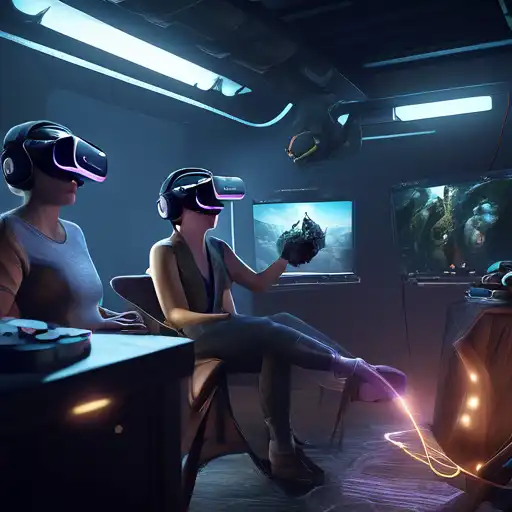Introduction to Virtual Reality
Virtual Reality (VR) has transformed the way we interact with digital content, offering unparalleled immersive experiences. From gaming to education, VR's applications are vast and varied. This guide will walk you through the essentials of creating captivating VR experiences that engage and astonish users.
Understanding VR Technology
Before diving into creation, it's crucial to understand the technology behind VR. VR headsets, such as the Oculus Rift and HTC Vive, provide the visual and auditory foundation, while motion tracking and hand controllers add interactivity. Knowing your hardware is the first step in crafting experiences that leverage these tools effectively.
Designing for Immersion
Immersion is the cornerstone of VR. To achieve it, focus on high-quality graphics, realistic sound design, and intuitive user interfaces. Environments should be detailed and interactive, encouraging users to explore. Remember, the goal is to make users forget they're in a virtual world.
Key Elements of Immersive Design
- High-resolution textures and models
- Dynamic lighting and shadows
- Spatial audio for realistic soundscapes
- Responsive and natural user interactions
Developing Your VR Experience
With a solid design in place, development begins. Platforms like Unity and Unreal Engine offer robust tools for VR development. Start by prototyping your environment, then gradually add interactivity and refine the user experience. Testing is vital; gather feedback and iterate to polish your VR experience.
Optimization Tips
VR demands high performance to maintain immersion. Optimize your models and textures, and use efficient lighting techniques to ensure smooth framerates. Balancing visual fidelity with performance is key to a comfortable VR experience.
Publishing and Sharing Your VR Experience
Once your VR experience is ready, consider platforms for distribution. SteamVR, Oculus Store, and Viveport are popular choices. Marketing your experience through social media and VR forums can help reach your target audience.
Future of VR
The future of VR is bright, with advancements in haptic feedback, eye-tracking, and wireless technology pushing the boundaries of immersion. Staying updated with these trends will inspire your next VR project.
Creating immersive VR experiences is a challenging yet rewarding endeavor. By understanding the technology, focusing on immersive design, and following best practices in development, you can craft experiences that captivate and delight users. The possibilities are limitless, and the future is virtual.
